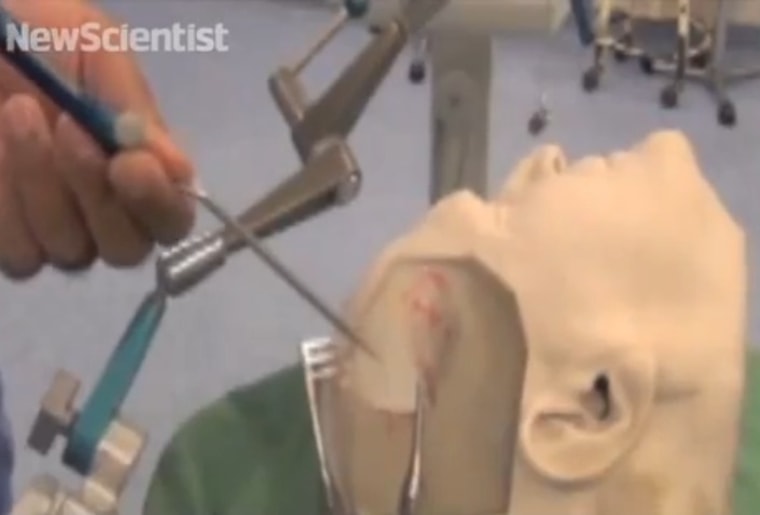If you and your brain were going under the knife, wouldn't it be comforting to know that your surgeon had practiced the exact operation, location, procedure and all, just a few hours earlier? Researchers have created a 3-D printed brain that lets doctors and students do just that — and it's disturbingly realistic.
The technique was created by the Center for Biomedical and Technology Integration, which was spun off of the University of Malaya in Kuala Lumpur, Malaysia. The team is led by Vicknes Waran, a professor and surgeon.
Models exist for training purposes already, even 3-D printed ones. However, this new technique not only builds the model based on scans of a particular brain, it also uses multiple materials to simulate the various layers the real organ would have.
Take a look at the video below. Warning: Although it's just various kinds of plastic and gel, you may nevertheless have a visceral reaction.
Neurosurgeons can also train virtually, but that lacks the tactile quality of a real operation. Knowing how much pressure to exert and what it feels like when a membrane is broken, for instance, are essential to navigating the fragile tissues of the brain. Even brains provided by organ donors aren't the same as a living one.
The printed models aren't quite mass-produced; the data, materials and advanced 3-D printers from Stratasys involved mean each brain takes a while to make, and costs around $600. Still, it's better than going in unprepared.
This post at ComputerWorld Malaysia has more details on the printing technique and other useful applications in the medical field.
Devin Coldewey is a contributing writer for NBC News Digital. His personal website is coldewey.cc.
